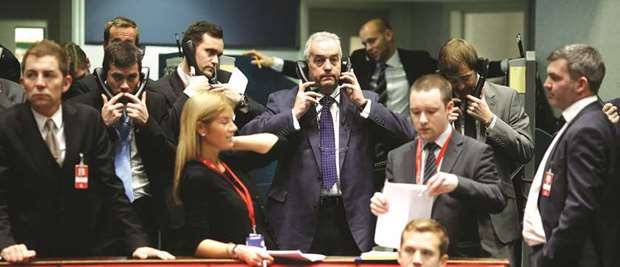Aluminium was the standout performer among the major industrial metals last week. On the London Metal Exchange (LME), three-month metal jumped by more than 7% to reach its highest in nearly three years at $2,048 a tonne.
China outdid even that, with the most actively traded contract on the Shanghai Futures Exchange (ShFE) hitting a five-year high of 16,480 yuan a tonne amid an explosion in trading volumes and open interest.
There is much speculative froth in these moves, particularly in Shanghai, but there is also a collective attempt to reassess this market’s supply risks. China has embarked on a policy of closing “illegal” smelter capacity, meaning that which has been constructed without the full gamut of official approvals.
This being China, the largest producer of aluminium in the world, there are big implications for supply. One operator alone, China Hongqiao, confirmed this morning that it has closed 2.68mn tonnes of capacity, equivalent to 4.5% of global output last year.
These are extraordinary times for aluminium. It is a metal with a history of structural excess capacity and oversupply.
Crisis in the past has been defined by too much metal rather than too little.
Which means there is no obvious precedent for pricing this new supply-side uncertainty.
Not helping is the uncertainty over what exactly is going on and the impact on actual production levels. When the world’s largest aluminium producer, Hongqiao, closes that much capacity, the news might be expected to be instantaneous and clear-cut.
That is not how things happen in China, however. When Hongqiao first confirmed on August 2 that it would be cutting “more than 2mn tonnes of outdated capacity”, it was reacting to rumours that seem to have been based on leaks from another Chinese producer’s management meeting.
Hongqiao played down the impact, a spokeswoman saying that what would shut would be replaced by newer capacity.
Annual production volumes would still exceed 7mn tonnes as “the utilisation rate goes over 100%”. On August 8 the Shandong Development and Reform Commission released a statement saying that it had found 3.21mn tonnes of illegal capacity in the province.
The capacity, including 2.68mn tonnes at Hongqiao, would be closed.
That statement, however, was actually dated July 24, meaning that the news had been circulating for at least a week before seeping into the broader market as rumour.
Only today did Hongqiao finally confirm that it has already closed 2.68mn tonnes of capacity, spread across five sites, on the orders of the Shandong regional government. Strictly speaking, the confirmation didn’t even come from Hongqiao but from a subsidiary, Shandong Weiqiao, in a statement to the Shenzhen stock exchange. Hongqiao’s own Hong Kong shares have been suspended since March after research firm Emerson Analytics published a report alleging that the company underreported its costs.
That is a whole different universe of uncertainty. It will need a “replacement permit” to prove that new production lines are replacing older, inoperative production lines. This new-for-old requirement and environmental permit system seem to be the two most common reasons for capacity being deemed illegal.
Unsurprisingly, there is now an active market in such permits, effectively allowing capacity transfers across local state borders. A total of 207,000 tonnes of shuttered capacity in the province of Henan, for example, will be transferred to an unnamed company in Inner Mongolia, according to a statement from the China Nonferrous Metals Industry Association (CNIA). Such transfers only add to the news noise and risk muddying already unclear waters.
The market could normally take some comfort from the monthly production figures from the National Bureau of Statistics (NBS) and the CNIA.
But both sets of figures come with very strong health warnings. Analysts are tending towards the view that “illegal” production capacity was taken out of the statistics before any of it actually closed.
That diminishes the power of any price signal generated from the latest NBS figures, which show national production falling 8.2% in July from June’s record run rate.
* Andy Home is a columnist for Reuters. The views expressed are those of the author.

Traders use telephones as they work on the trading floor at the London Metal Exchange (file). Aluminium was the standout performer among the major industrial metals on the LME last week.
